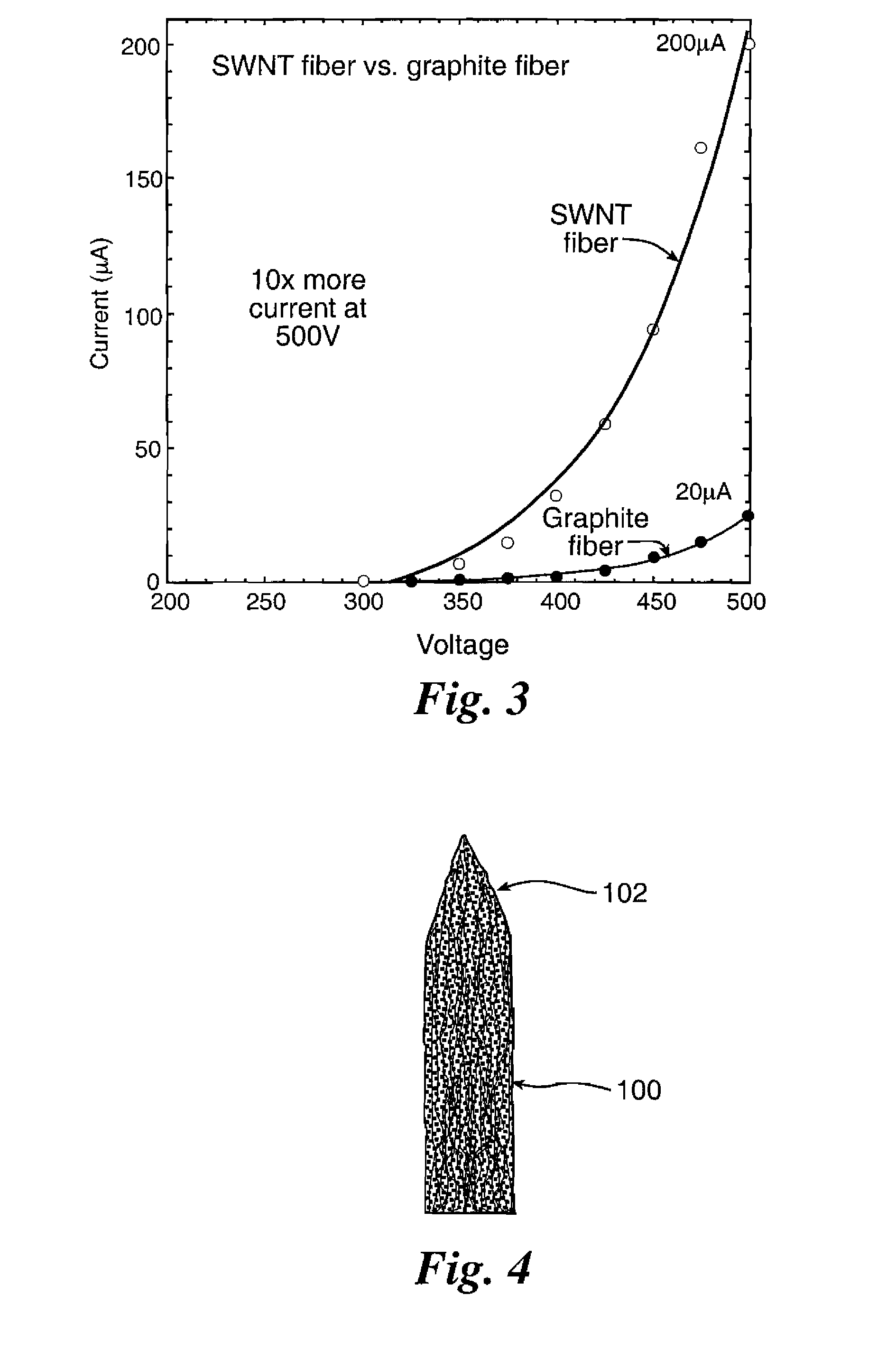Carbon nanotube fiber cathode
a carbon nanotube and fiber cathode technology, applied in the direction of electric discharge tube/lamp manufacturing, non-electron-emitting electrode materials, discharge tube luminescnet screens, etc., can solve the problems of limited number of emission sites, limited current density of such large arrays, and difficulty in achieving high current densities of carbon nanotube cathodes. achieve high current densities and voltages, and achieve high current carrying capacity, the effect of superiority
- Summary
- Abstract
- Description
- Claims
- Application Information
AI Technical Summary
Benefits of technology
Problems solved by technology
Method used
Image
Examples
Embodiment Construction
[0020]The disclosed fiber cathodes may be formed from a variety of materials. They may be formed from single-wall nanotubes (SWNTs) by spinning solutions of SWNTs in a superacid into different coagulants to form a fiber, as disclosed in U.S. Pat. No. 7,125,502 B2, the entire contents of which are incorporated herein by reference. As shown in FIG. 1, such a fiber 100 comprises a plurality of densely-packed SWNTs 101 that are highly-aligned along an axial direction of the fiber 100. The fiber 100 can have varying diameters depending on the number of SWNTs that are spun together and may be, for example, about 40 to 400 microns in diameter and have carbon nanotube densities of about 50% to about 100% and preferably of about 70% to about 100% of the theoretical maximum density of nanotubes. The fiber 100 may comprise a plurality of densely-packed double-wall carbon nanotubes, multi-wall carbon nanotubes, graphene nanoribbons, and / or carbon nanofibers in addition to, or in lieu of, the SW...
PUM
| Property | Measurement | Unit |
|---|---|---|
| current | aaaaa | aaaaa |
| diameter | aaaaa | aaaaa |
| diameter | aaaaa | aaaaa |
Abstract
Description
Claims
Application Information
 Login to View More
Login to View More - R&D
- Intellectual Property
- Life Sciences
- Materials
- Tech Scout
- Unparalleled Data Quality
- Higher Quality Content
- 60% Fewer Hallucinations
Browse by: Latest US Patents, China's latest patents, Technical Efficacy Thesaurus, Application Domain, Technology Topic, Popular Technical Reports.
© 2025 PatSnap. All rights reserved.Legal|Privacy policy|Modern Slavery Act Transparency Statement|Sitemap|About US| Contact US: help@patsnap.com



